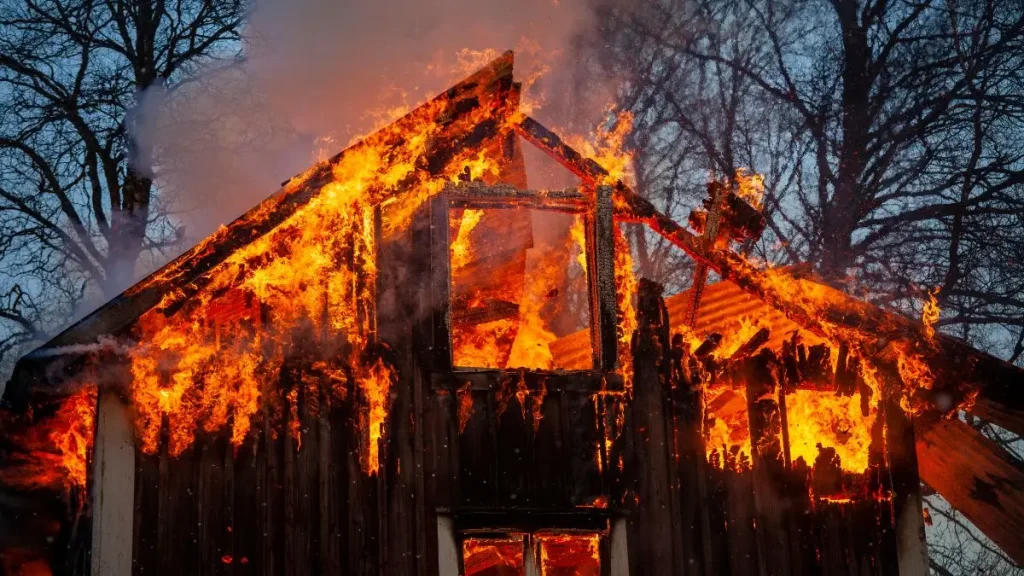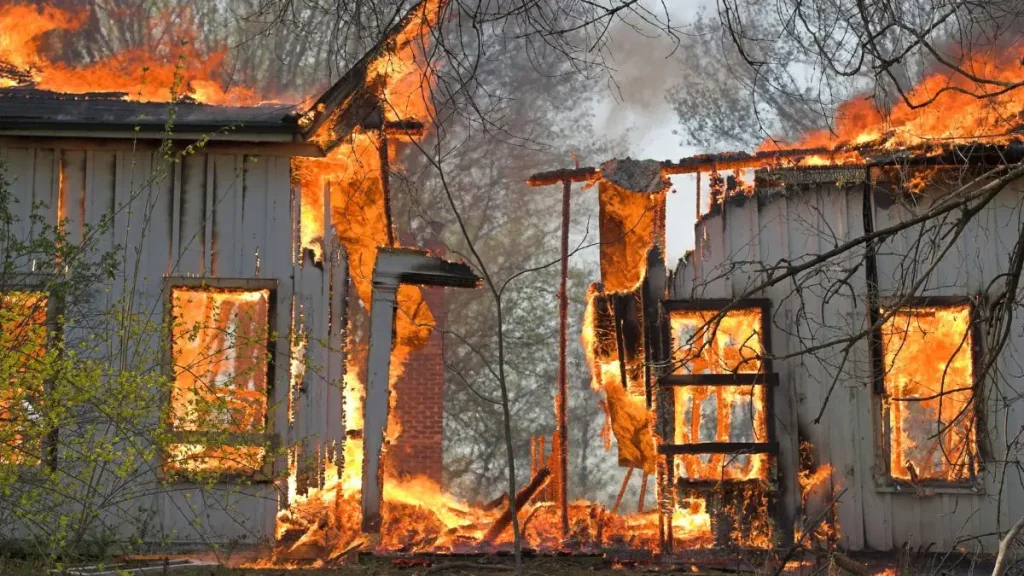Cincinnati Fire at East Westwood House Results in One Death and SWAT Response
I live in Cincinnati, and when I saw the breaking news alert about the East Westwood fire, my gut sank. A house was burning. SWAT was on scene. And someone inside was dead.
This wasn’t just another house fire—it was something much more intense, more dangerous. Around 7 p.m. that evening, police and firefighters were called to a home on Harkness Avenue. But this wasn’t just about smoke and flames. The 911 caller mentioned a man inside who was armed. That instantly shifted the entire response.
The SWAT team had to get involved. Streets were blocked off. Firefighters couldn’t just rush in like they usually would. They had to hold back—for their safety, and for everyone else’s.
If you’re wondering why a tactical team would respond to what sounds like a fire call, you’re not alone. A lot of people asked that online. But in this case, the suspect was reportedly dangerous. Police believed he had a gun. That changes everything about how first responders are allowed to act.
What makes this more tragic is that someone died inside. Officials haven’t released the identity yet. All we know is that the body was found after the fire was put out. No one else was hurt, but that doesn’t make it any easier.
This story is still developing. But even now, it’s got a lot of people in the community shaken—especially those who live near East Westwood.
What would you want to know if this happened two blocks from your house? Drop your thoughts below—I want to hear how you’d feel in that situation.
What Actually Happened That Night on Harkness Avenue
If you’re anything like me, the first thing you want to know is: How did this even start? According to WLWT’s initial report, it was around 7 p.m. when someone called 911, saying there was a man inside the house who was acting erratically—and he might have had a gun.
Now think about that for a second. You’re a neighbor, and suddenly police tape goes up, SWAT trucks roll in, and you see a house catching fire—all at once. That’s exactly what people living near Harkness Street saw that night. Police immediately blocked off the area and brought in the SWAT team because they had to treat it like a barricade situation. It wasn’t safe to just walk in.
Firefighters couldn’t even start fighting the flames right away. The man inside was still considered armed and dangerous, so the crew had to work from a distance, using elevated hoses to spray water from above.
And here’s the part that hit me: they couldn’t go in until they were sure it was safe. So while smoke poured out, they had to wait and hold their ground.
One Life Lost: What We Know About the Person Inside

The hardest part of this story? Someone didn’t make it out.
WCPO reported that after firefighters managed to knock down the flames and enter the home, they found one person dead inside. At the time I’m writing this, the identity hasn’t been officially released, but police believe it may have been the man the 911 caller warned them about—the one who was barricaded inside.
There’s still a lot we don’t know. Did the fire kill him? Did something happen before that? Was it intentional? These are the questions investigators are digging into now, and if you’ve been following local news, you know answers in cases like this don’t come quickly.
But here’s what really gets me: someone’s son, brother, or friend died alone, in a fire, with SWAT outside and the whole neighborhood watching. No matter what the circumstances were, that’s tragic.
Sadly, this reminds me of the devastating fire in Philadelphia’s Strawberry Mansion where a pregnant woman and two children lost their lives in similar heartbreaking isolation. Read more.
What Kind of Neighborhood is East Westwood, Anyway?
If you’re not from Cincinnati, the name “East Westwood” might not mean much to you. But I’ve been around the area, and here’s what I can tell you: it’s a working-class neighborhood—tight-knit, often overlooked, but full of people just trying to get by.
This isn’t the first time the area has seen crisis. Just this past January, there was a major fire at a local food market. It didn’t get national headlines, but it rattled the locals. The community deals with its fair share of struggles—economic stress, housing issues, and yes, sometimes violence.
What struck me this time was how neighbors reacted. Many came out to watch, some recorded videos, others just stood in silence. When you see a house on fire in your own neighborhood, it’s more than news—it’s a punch to the gut. Because you know it could’ve been your block.
So when people say “oh, just another fire,” I disagree. This one says something about where we’re at—and how vulnerable some neighborhoods really are.
For those who like getting updates like these without waiting for evening news recaps, there’s a WhatsApp channel I came across that posts verified alerts and on-ground reports—worth checking if you want to stay in the loop when things unfold fast.
Why Did SWAT Show Up for a Fire? Here’s What You Need to Know
I’ll be honest—when I first saw “SWAT” and “house fire” in the same sentence, I was confused. You probably were too. But here’s the thing: it wasn’t just a fire. It was a tactical threat wrapped inside a fire emergency.
Police believed the man inside the home had a gun. That changes everything. When there’s a credible threat of someone armed and barricaded, regular firefighters can’t just rush in. The SWAT team was there to secure the perimeter, protect emergency personnel, and assess how dangerous the situation really was.
According to officials, the fire department used an elevated stream of water—kind of like fighting from above. That’s because entering the house wasn’t safe. One wrong move could’ve ended in more casualties.
What stood out to me is how closely police and firefighters had to work together. In high-risk calls like this, response teams aren’t just fighting fires—they’re trying to save lives while protecting their own. That’s real coordination under pressure.
Fires aren’t just dangerous for those trapped inside—they push emergency teams to their physical and emotional limits, like what happened in Evansville.
What Investigators Are Looking Into Right Now?
If you’re still wondering how this all really happened, you’re not alone. I’m following the updates just like you, and right now, investigators are still piecing everything together. According to Local12, the fire started during the standoff—and that’s a huge detail.
Fire officials haven’t confirmed whether the fire was set accidentally or on purpose. But based on how the suspect was acting, and how quickly the house was engulfed, a lot of people suspect it might have been intentional. That raises big questions about motive, mental state, and even whether this could’ve been prevented.
Police have said they’re waiting for forensic results and a positive ID on the person found inside before making any formal announcements. If it turns out the man was wanted for something serious before this, that’ll shift the entire tone of the story.
For now, all we can do is watch and wait. But if you’re like me, you want those answers—not just for closure, but to understand how a neighborhood night turned into a full-blown tactical emergency.
The Cleveland house fire earlier this year also left more questions than answers in its early hours. Here’s how that unfolded, in case you missed it.
What This Means for You and Me: Fire Safety Isn’t Just a News Story

Let’s be real. When we hear about house fires, most of us think, “That’s awful,” and then we move on. But this one hit different for me. It made me look around my own house and think—am I prepared if something goes wrong?
If you don’t have working smoke alarms on every floor, get them. If you haven’t talked to your family about an exit plan, do it this weekend. Fires don’t care how safe your neighborhood feels. They happen fast. And when there’s another threat involved—like a weapon or someone barricaded—your margin for survival gets even smaller.
I’m not trying to scare you. But I do want to push you a bit. Because these stories aren’t just about “other people.” They’re about you, me, and how ready we are when life goes sideways.
What Happens to a Neighborhood After Something Like This?
You know what doesn’t make the headlines? The quiet after something like this. The days when the fire trucks are gone, the tape is down, but people are still shaken.
East Westwood isn’t a place that gets much media love. But it’s filled with people who show up for each other, even when things fall apart. I’ve seen communities like this rally around after loss—offering meals, support, sometimes just silence and a hug.
Still, trauma lingers. A SWAT team rolling into your street isn’t something you forget. And when a home burns with someone trapped inside, that memory sticks.
If you live in the area—or anywhere like it—don’t underestimate the impact of what just happened. This could be a moment when neighbors check in on each other more, when community groups organize around safety, or when mental health support becomes more than just a buzzword.
We all carry a little bit of this story now.
Final Thoughts
I keep thinking about how fast everything unfolded on Harkness Avenue—one call, one suspect, and suddenly an entire neighborhood was frozen in fear.
Stories like this aren’t just headlines. They’re reminders. If you’re lucky enough to go to bed in peace tonight, take a second to appreciate it—and maybe check your smoke alarm before you do.
If you’ve been following stories like this, you’ll find more real-life fire incidents we’ve covered on our website. Each one reveals something different about how communities respond—and recover.
Disclaimer: This article is based on publicly available reports at the time of writing. Official investigations are still ongoing. Details may evolve as more information is released by authorities.


